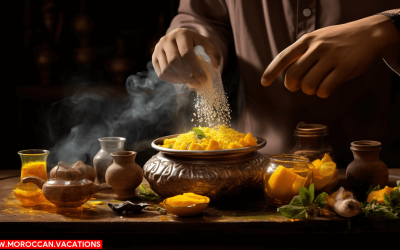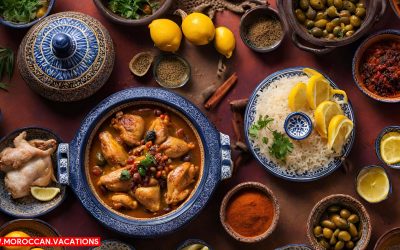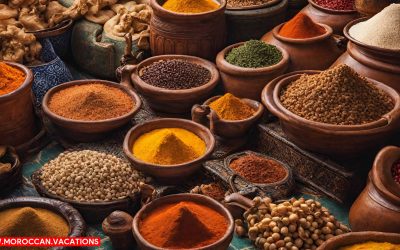The Vibrant Roots of Moroccan Cuisine
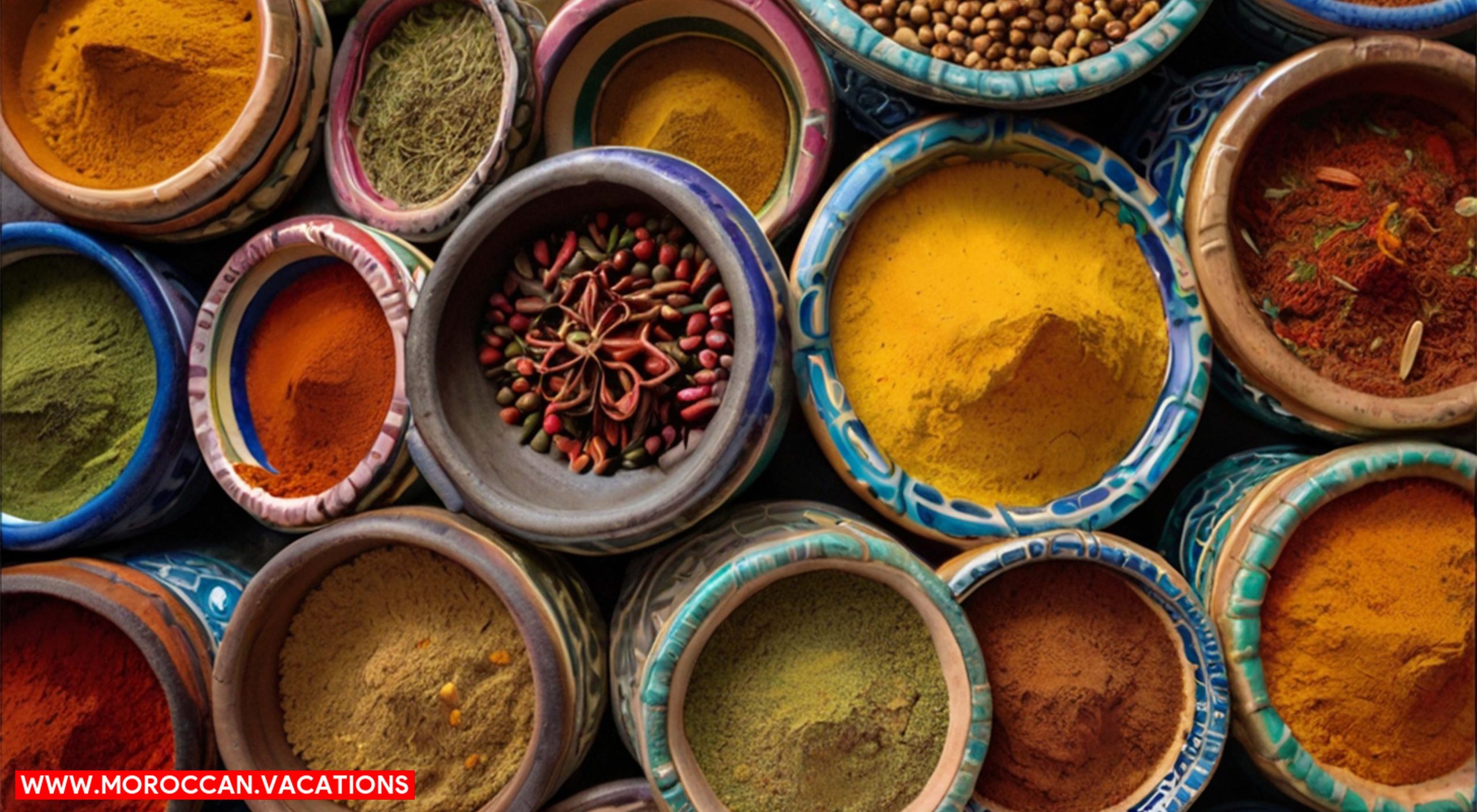

Exploring Morocco’s Spice Blends
You’ll find a multitude of unique spice blends in Moroccan cuisine that not only enrich the flavor of dishes, but also unveil a world of culinary tradition and history. These spice mixes are a testament to Morocco’s diverse influences, a melting pot of tastes from the Mediterranean, Arab, and Berber cultures. As you delve into Moroccan Curry Exploration, you’ll discover that each blend offers a distinct flavor profile, carefully crafted to complement specific dishes. Spice Market Insights reveal the following key blends that define Moroccan cuisine:- Ras El Hanout: An intricate mix often containing over a dozen spices, with a warm, sweet, and slightly spicy flavor.
- Harissa: A fiery paste made from chili peppers, garlic, and other spices, it’s the soul of many Moroccan dishes.
- Chermoula: A tangy blend of fresh herbs, garlic, and spices, used primarily for marinating fish.
- Baharat: A balanced blend of sweet and smoky flavors, perfect for grilled meats.
- Za’atar: A fragrant mix of toasted sesame seeds, dried herbs, and sumac, it’s often sprinkled on flatbreads.
The Art of Moroccan Bread Making
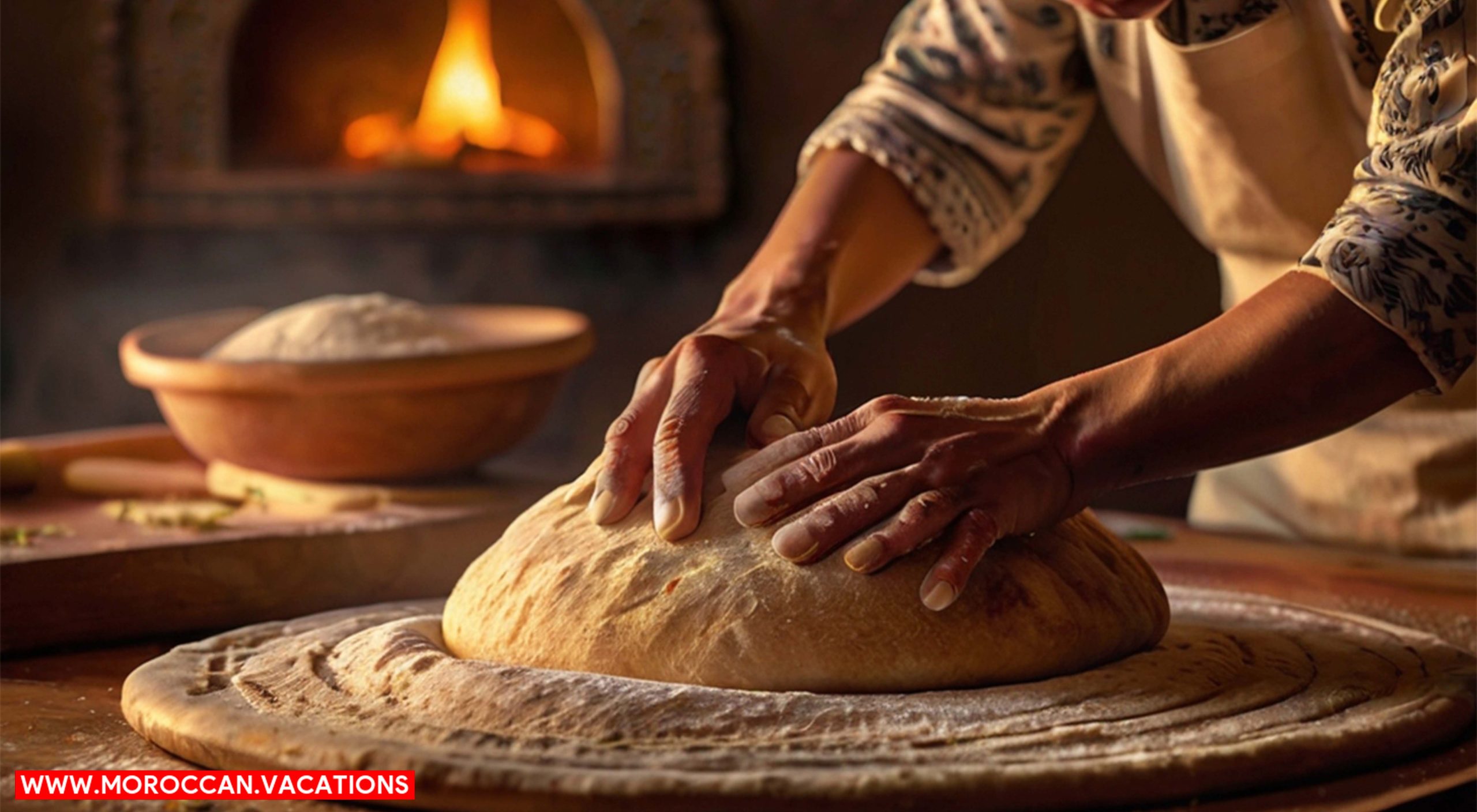

| Bread Type | Baking Method | Key Ingredients |
| Khobz | Baked in a traditional oven | White flour, water, yeast, salt |
| Batbout | Cooked on a stove top | Semolina, flour, yeast, salt, water |
| Baghrir | Cooked in a non-stick pan | Semolina, flour, yeast, sugar, salt, water |
| Msemen | Fried on a griddle | Semolina, flour, yeast, salt, water, butter |
| Harcha | Baked in a pan | Semolina, butter, sugar, milk |
Signature Moroccan Soups and Stews
After indulging in the art of Moroccan bread making, you’ll be thrilled to explore the heart-warming world of signature Moroccan soups and stews. These culinary creations, steeped in centuries-old Soup Traditions and Stew Variations, contain a symphony of flavors that’ll delight your senses. Here’s a quick peek into some of these gastronomic masterpieces:- Harira: This rich, tomato-based soup is often consumed to break the fast during Ramadan.
- Bissara: A humble fava bean soup, served with a drizzle of olive oil and a sprinkling of cumin.
- Tangia: Not to be confused with tagine, this slow-cooked Marrakech stew is traditionally prepared by men.
- Rfissa: A hearty chicken stew served over shredded pancakes, boasting a unique combination of flavors.
- Chorba: A popular soup throughout North Africa, Moroccan versions often feature lamb and a variety of vegetables.
Moroccan Seafood: A Coastal Delight
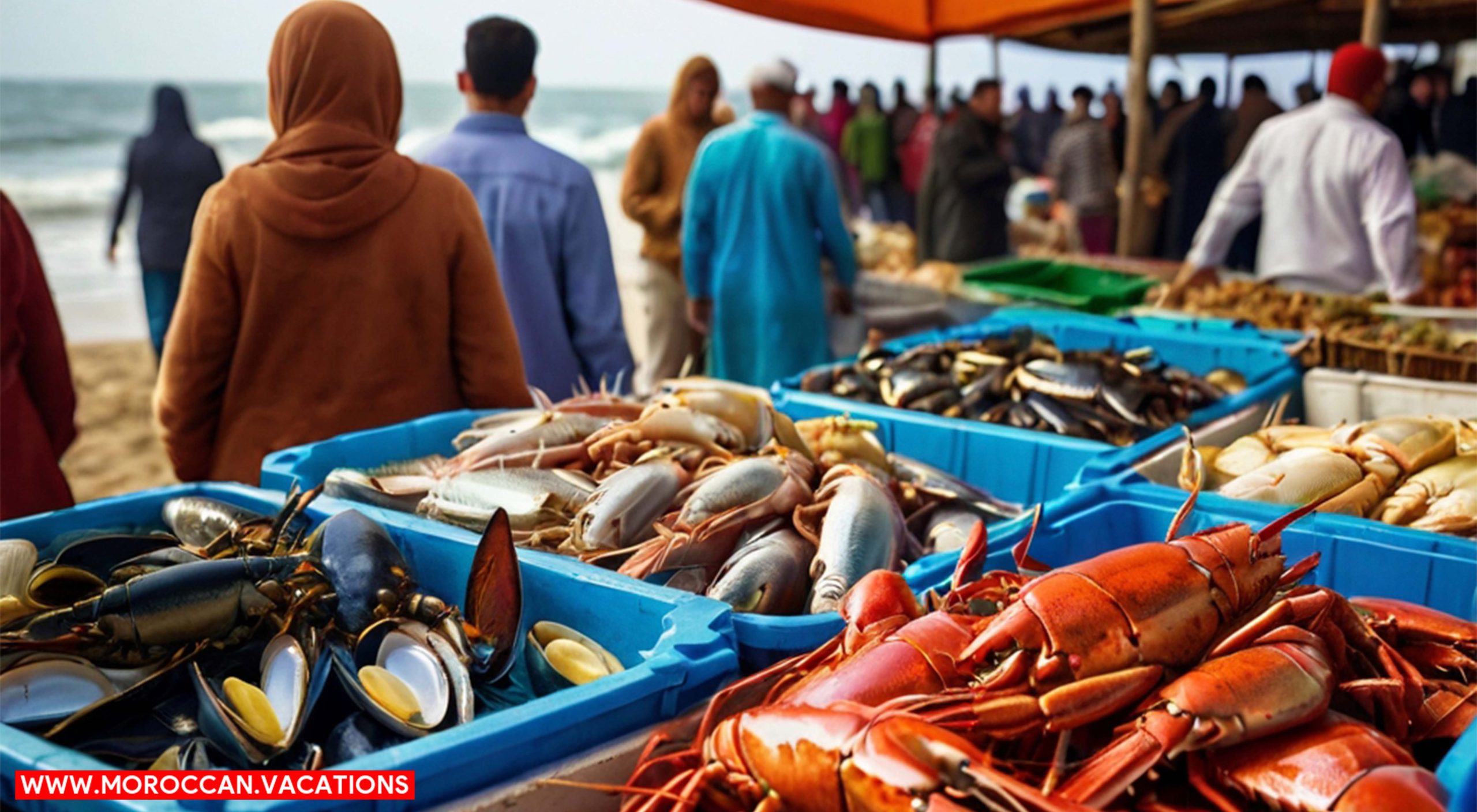

Sweet Treats From Moroccan Kitchens
Often, after savoring Morocco’s seafood delights, you’ll find yourself craving something sweet, and that’s where the exquisite array of Moroccan desserts comes in. These sweet treats are the result of complex Moroccan dessert techniques, blending traditional sweet ingredients to create an irresistible finale to any meal. Let’s explore some of the most popular Moroccan desserts:- Chebakia: Deep-fried dough, shaped like a flower, coated in honey, and sprinkled with sesame seeds.
- Sellou: A rich, energy-packed treat made from toasted flour, almonds, and sesame seeds.
- Briouat: Pastry triangles filled with almond paste, fried and dusted with powdered sugar.
- Kaab el Ghazal: Almond-stuffed crescent pastries, also known as ‘Gazelle’s Horns’.
- Halwa Chebakia: A sweet, gelatinous treat made from sesame seeds and honey.
The Role of Tea in Moroccan Culture
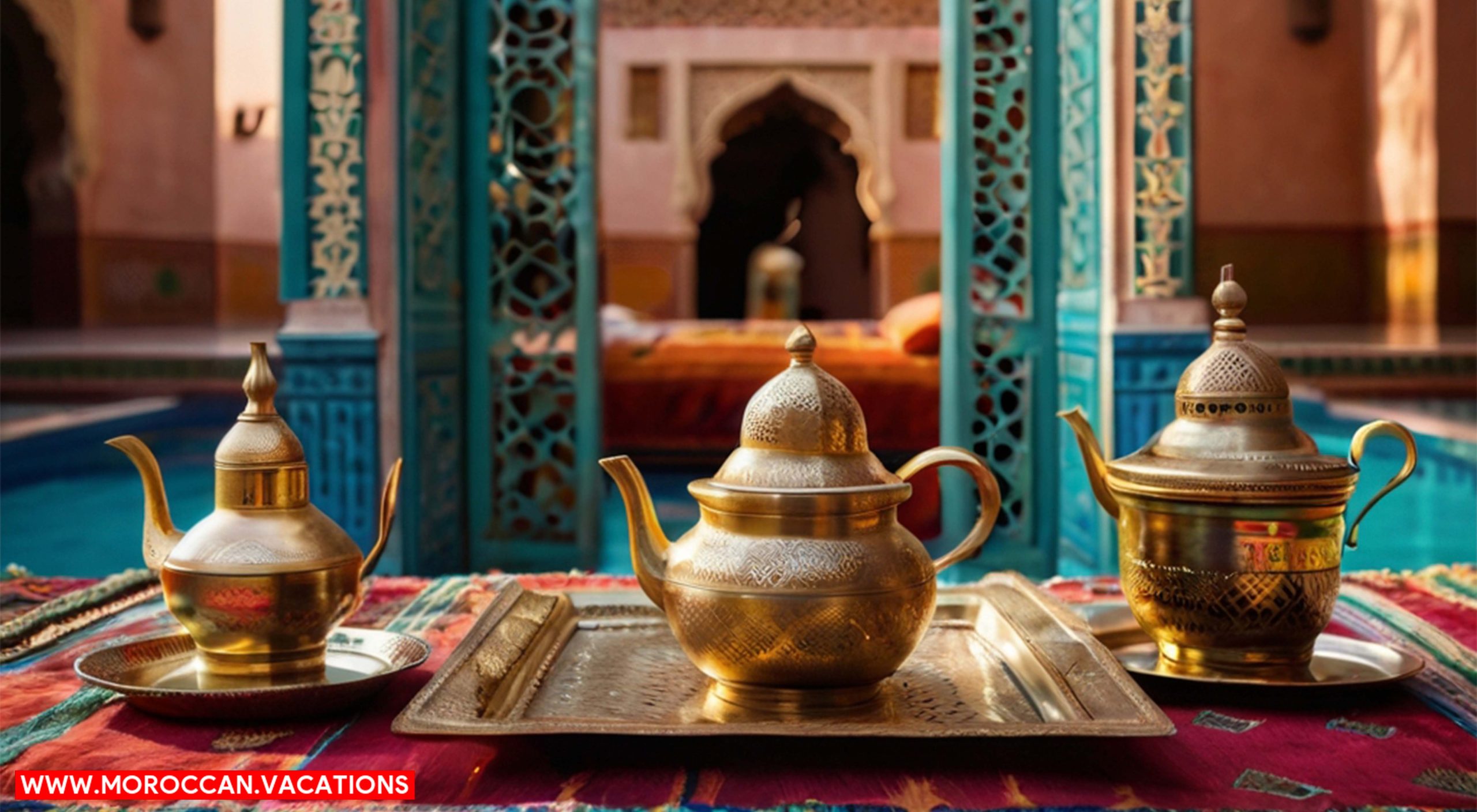

Discovering Moroccan Street Food Delicacies
In the bustling lanes of Morocco, you’ll uncover a myriad of street food delicacies that’ll captivate your senses and tantalize your taste buds. Night market exploration becomes an adventure, as you navigate through food stalls under twinkling stars, each offering something unique and exquisite. Here’s a brief introduction to some must-try delicacies:- M’semen: A rich, flaky flatbread, often served with honey or cheese.
- Harira: A hearty lentil and tomato soup, traditionally broken fast with during Ramadan.
- Brochettes: Moroccan version of kebabs, skewered and grilled to perfection.
- B’ssara: A warm fava bean dip often served for breakfast.
- Maakouda: Deep-fried potato balls, best enjoyed with a spicy sauce.


Samira Amrani
The passionate author behind Moroccan Vacations, sharing her expertise and love for Moroccan culture, cuisine, and travel experiences to inspire wanderlust in every reader.
Related Articles
The Health Benefits of Moroccan Ingredients Used in Cooking Classes
Exploring the Power of Saffron Looking to boost your health and tantalize your taste buds? Look no further than the rich and exotic flavors of Moroccan cuisine. In our cooking classes, you'll discover the incredible health benefits of Moroccan ingredients. From the...
Traditional Moroccan Recipes You Can Try at Home
Transport your taste buds to Morocco with our collection of traditional Moroccan recipes. From savory tagines to sweet pastries, explore the rich flavors and aromatic spices of Moroccan cuisine in the comfort of your own home. Embark on a culinary adventure and experience the essence of Morocco in every bite.
The Spice Route: a Journey Through the Aromas of Moroccan Cuisine
Embark on a flavorful journey through the Spice Route of Moroccan cuisine. Explore the vibrant aromas and exotic flavors that define this culinary tradition. From aromatic tagines to zesty couscous, immerse yourself in the rich tapestry of Moroccan spices.

